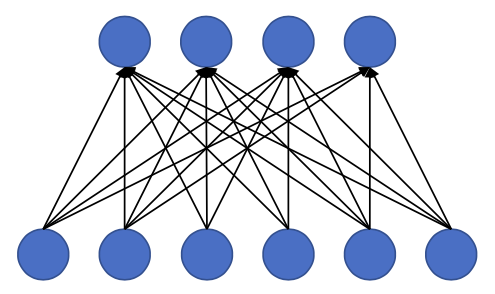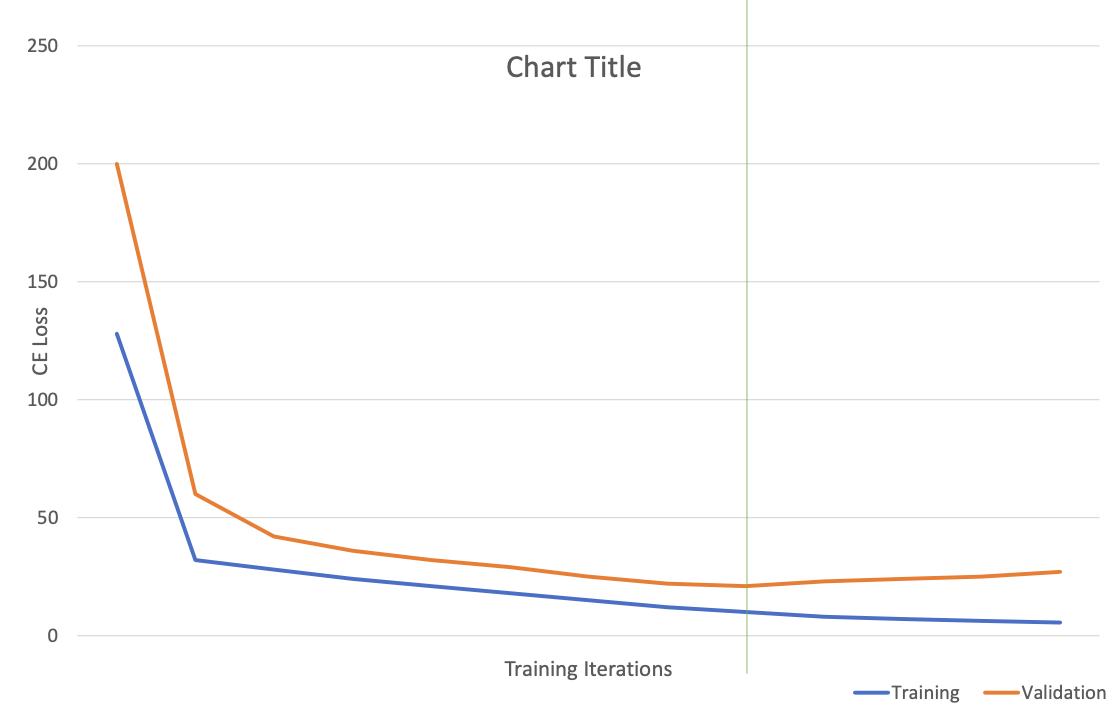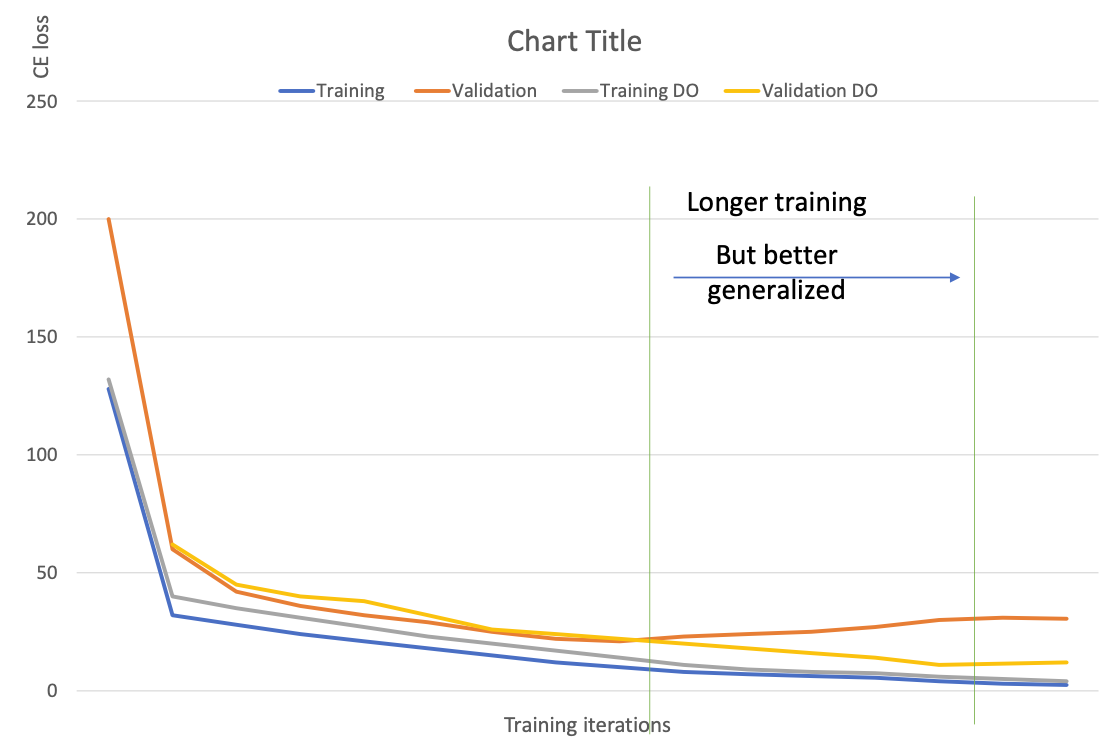Dropout
Model Overfitting

In order to give more “capacity” to capture different features, we give neural nets a lot of neurons. But this can cause overfitting.

Reason: Co-adaptation
- Neurons become dependent on others
- Imagination: neuron $H_i$ captures a particular feature $X$ which however, is very frequenly seen with some inputs.
- If $H_i$ receives bad inputs (partial of the combination), then there is a chance that the feature is ignored 🤪
Solution: Dropout! 💪
Dropout
With dropout the layer inputs become more sparse, forcing the network weights to become more robust.

Dropout a neuron = all the inputs and outputs to this neuron will be disabled at the current iteration.
Training
Given
- input $X \in \mathbb{R}^D$
- weights $W$
- survival rate $p$
- Usually $p=0.5$
Sample mask $M \in {0, 1}^D$ with $M_i \sim \operatorname{Bernoulli}(p)$
Dropped input: $$ \hat{X} = X \circ M $$
Perform backward pass and mask the gradients: $$ \frac{\delta L}{\delta X}=\frac{\delta L}{\delta \hat{X}} \circ M $$
Evaluation/Testing/Inference
ALL input neurons $X$ are presented WITHOUT masking
Because each neuron appears with probability $p$ in training
$\to$ So we have to scale $X$ with $p$ (or scale $\hat{X}$ with $\frac{1}{1-p}$ during training) to match its expectation
Why Dropout works?
- Intuition: Dropout prevents the network to be too dependent on a small number of neurons, and forces every neuron to be able to operate independently.
- Each of the “dropped” instance is a different network configuration
- $2^n$ different networks sharing weights
- The inference process can be understood as an ensemble of $2^n$ different configuration
- This interpretation is in-line with Bayesian Neural Networks
